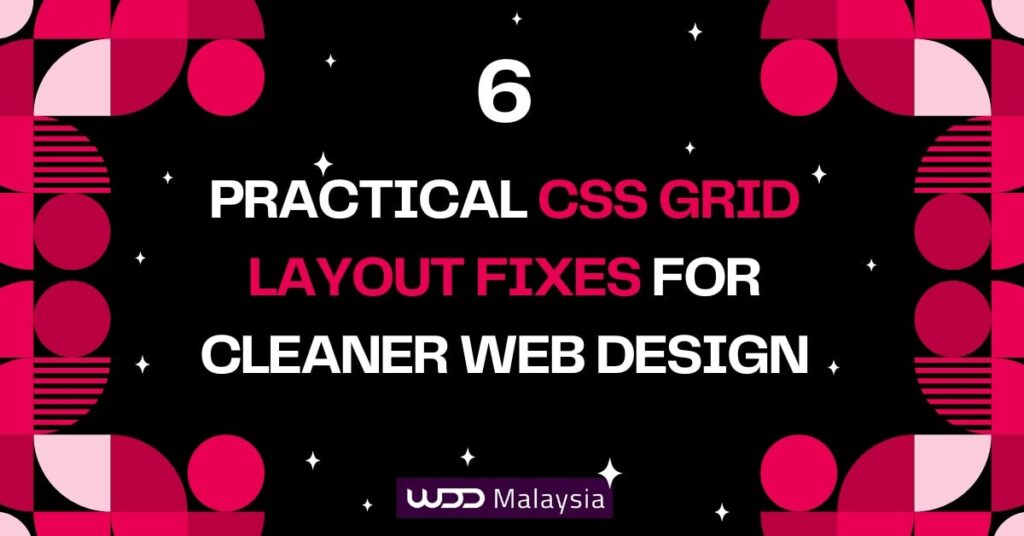
Advanced grid layouts have become an essential component in modern web design, offering a structured approach that significantly enhances user experience through effective content organization. By leveraging the grid layout module, designers can craft visually appealing and responsive designs that seamlessly adapt to various screen sizes. This powerful layout system allows for the definition of rows and columns, making it easier to manage complex layouts while maintaining flexibility.
By utilizing CSS grid, you can ensure your website remains both functional and aesthetically pleasing, providing a user-friendly interface that caters to the needs of modern internet users. CSS grid layout empowers web designers to create dynamic and adaptive designs that respond to the ever-evolving demands of digital interfaces. With the ability to control the arrangement and alignment of grid items within a grid container, designers can achieve a high level of precision in their layouts.
This method not only enhances the visual appeal of a website but also ensures its functionality across different devices and browsers. By mastering advanced grid techniques, such as grid template areas and nested grids, designers can build intricate layouts that enhance content organization and user engagement. Ultimately, CSS grid layout serves as a vital tool for web designers aiming to create cutting-edge, responsive designs that stand out in today’s competitive digital landscape.
Key Takeaways
Master the basics of CSS grids to create structured and visually appealing web designs.
Utilize nested grids to manage complex layouts and enhance content organization.
Implement grid template areas for easier content placement and layout adjustments.
Adopt responsive design strategies to ensure your website looks great on all devices.
Test your grid layouts across different browsers to maintain consistent user experiences.
Avoid overcomplicating grid structures; simplicity leads to more effective designs.
Prioritize mobile responsiveness to cater to users accessing your site on various devices.
Introduction to Grid Layout
Grid layout is a powerful system in CSS that allows web designers to create complex and flexible layouts with ease. Unlike traditional layout methods, the grid layout is a two-dimensional system, meaning it can handle both rows and columns simultaneously. This makes it an ideal choice for creating responsive and adaptable designs that can seamlessly adjust to various screen sizes and devices. By leveraging the capabilities of grid layout, designers can achieve a high level of precision and control over their web designs, ensuring both functionality and aesthetic appeal.
What is a Grid?
A grid in web design is a framework of intersecting horizontal and vertical lines that define rows and columns. These lines create a series of grid cells where elements can be placed. This structure allows for the creation of complex layouts with multiple rows and columns, providing a clear and organized way to arrange content. Grids can be used to layout major page areas, such as headers, footers, and sidebars, as well as smaller user interface elements. By using grids, designers can ensure that their layouts are both visually appealing and easy to navigate.
Understanding the Basics of CSS Grids Layout
To master web design, understanding the fundamentals of CSS grid layout is essential. An explicit grid allows you to define specific rows and columns using the grid-template-rows and grid-template-columns properties, providing precise control over track sizing. This powerful tool allows web designers to create structured and visually appealing layouts that enhance both aesthetics and functionality. By effectively utilizing CSS grid, you can define rows and columns within a grid container, allowing for precise control over the placement and alignment of grid items.
This level of control is crucial for crafting responsive designs that seamlessly adapt to various screen sizes, ensuring that your website remains user-friendly and visually engaging across all devices. As a web designer, mastering CSS grid layout empowers you to build dynamic and adaptive designs that cater to the ever-evolving demands of digital interfaces. By leveraging advanced techniques such as grid template areas and nested grids, you can create intricate layouts that enhance content organization and user engagement.
This approach not only improves the visual appeal of your website but also ensures its functionality across different devices and browsers. Ultimately, CSS grid layout serves as a vital tool for web designers aiming to create cutting-edge, responsive designs that stand out in today’s competitive digital landscape.
Grid Containers and Items
In CSS grid layout, the grid container acts as the pivotal parent element that organizes grid items. By setting the display property to “grid” or “inline-grid,” you convert the container into a flexible layout system, establishing a structured framework for your design. Within this grid container, grid items, which are the child elements, are meticulously arranged. These items’ size, position, and alignment can be controlled through a variety of CSS properties, offering a high level of customization and adaptability.
Grasping the interplay between grid containers and grid items is essential for developing sophisticated grid layouts. This understanding enables web designers to create visually striking and responsive designs that enhance user experience across various devices and browsers. By mastering this interaction, designers can seamlessly integrate aesthetics and functionality, ensuring their web designs are both captivating and efficient in the fast-paced digital environment.
Defining Rows and Columns
As a web designer, understanding how to define rows and columns using CSS grid is essential for creating structured and visually appealing websites. By employing the grid-template-rows and grid-template-columns properties, you gain precise control over the number, size, and arrangement of rows and columns within your grid container. This capability allows you to design complex layouts that adapt seamlessly to various screen sizes, ensuring an optimal user experience.
Additionally, the ‘grid-auto-rows’ property plays a crucial role in defining the size of automatically generated grid tracks. It allows you to set a specific height for these implicit rows, ensuring they adhere to a minimum size while allowing for flexibility based on content size.
The flexibility offered by these properties is crucial in today’s digital landscape, where responsive design is a must for maintaining both functionality and aesthetics across different devices. Mastering these techniques not only enhances the visual impact of your web designs but also improves navigation and user engagement, making your sites more effective and appealing.
Incorporating these CSS grid techniques into your design strategy also significantly boosts your site’s search engine optimization. Structured layouts enhance content readability and accessibility, making it easier for search engines to crawl and index your pages, ultimately improving your site’s visibility and ranking. This increased visibility attracts more organic traffic, which is vital for the success of any online venture.
As a web designer, having the ability to define rows and columns precisely empowers you to create dynamic, efficient designs that meet the demands of modern internet users. By mastering CSS grid layout, you position yourself as a leader in web design, capable of delivering innovative and competitive digital solutions that stand out in today’s crowded online marketplace.
Advanced Techniques in Advanced CSS Grid
Nested Grids
Understanding the power of nested grids is crucial for crafting sophisticated, layered layouts. By embedding one grid within another, you gain precise control over your design’s structure, allowing for a hierarchical organization that enhances both functionality and aesthetics. This advanced technique is particularly beneficial when managing complex layouts that require multiple layers of organization.
It offers a granular approach to positioning and aligning grid items within their respective containers, ensuring a cohesive and visually striking web presentation. Mastering nested grids not only simplifies the management of intricate designs but also elevates the overall user experience by providing a seamless and intuitive interface.
Moreover, the strategic implementation of nested grids empowers you to create responsive designs that effortlessly adapt to various screen sizes, a vital aspect in today’s diverse digital landscape. By leveraging the flexibility of CSS grid layout, you can develop dynamic and adaptive designs that meet the ever-changing needs of digital interfaces.
This approach significantly enhances the visual impact of your web designs while improving navigation and user engagement, making your sites more effective and appealing. As you continue to refine your expertise in utilizing nested grids, you position yourself as a forward-thinking designer capable of delivering innovative solutions that stand out in the competitive online marketplace, ultimately solidifying your reputation as a leader in web design.
Grid Template Areas
Leveraging grid template areas is pivotal for efficient content management within a CSS grid layout. This advanced technique empowers you to define and name specific sections of your grid, known as grid areas, crafting a clear and organized visual blueprint of your design. By strategically utilizing grid template areas, you streamline content placement, allowing for effortless layout adjustments without disrupting the underlying structure.
Grid areas are significant in forming structured layouts, as they allow you to assign content to named sections, enhancing both visual and semantic organization. This approach is especially beneficial for developing complex layouts that require both flexibility and ease of maintenance. Mastery of grid template areas not only enhances your design efficiency but also enables you to create intricate, visually captivating, and highly functional web designs. Integrating grid template areas into your design process significantly improves your ability to implement quick modifications and achieve seamless content organization.
This method is crucial for ensuring a responsive and adaptable design, keeping your website engaging and user-friendly across various devices. As you refine your expertise in grid template areas, you position yourself as an innovative web designer capable of delivering cutting-edge digital solutions.
Responsive Design Strategies
Implementing responsive design strategies is paramount to ensuring that your website maintains its appeal and functionality across all devices. By leveraging CSS grid layout, you can craft designs that seamlessly adapt to varying screen sizes, enhancing the overall user experience. The flexibility of CSS grid is crucial in this endeavor, allowing for the creation of structured layouts that remain consistent and visually appealing regardless of the device.
Advanced techniques such as auto-fill and auto-fit are instrumental in this process, enabling grid items to automatically adjust and maintain a cohesive layout across different platforms. Adopting these responsive design strategies is a best practice in modern web design, ensuring your site is both aesthetically pleasing and highly functional.
Incorporating responsive design not only enhances user satisfaction but also positions your website to meet the diverse needs of today’s digital audience. As users increasingly access websites on a range of devices, from desktops to smartphones, ensuring that your design is adaptable is essential.
By employing CSS grid layout, you can achieve a harmonious blend of form and function, delivering a user-friendly interface that caters to the demands of modern internet users. This approach not only improves the visual appeal of your site but also boosts its usability, making it an indispensable aspect of contemporary web design.
Grid Flow
Grid flow refers to the method by which grid items are placed into the grid. By default, grid items are placed in a row-by-row manner, filling each grid cell from left to right and top to bottom. However, this default behavior can be modified using the grid-auto-flow property. This property allows designers to control the flow of grid items, enabling the creation of column-based layouts or more complex arrangements. By understanding and utilizing grid flow, designers can achieve greater flexibility and precision in their layouts, ensuring that content is displayed in the most effective and visually appealing manner.
Alignment and Justification
Alignment and justification are crucial aspects of grid layout that determine how grid items are positioned within their grid cells. The justify-items and align-items properties allow designers to control the alignment of items along the horizontal and vertical axes, respectively. These properties can be used to center items, align them to the start or end of their grid cells, or distribute them evenly. Additionally, the justify-content property allows for the distribution of space between grid tracks, ensuring that the overall layout is balanced and visually appealing. By mastering these alignment and justification techniques, designers can create layouts that are both functional and aesthetically pleasing.
Advanced Grid Features
Subgrid
A subgrid is an advanced feature in CSS grid that allows for the creation of nested grids within a parent grid. This technique is particularly useful for creating complex layouts with multiple levels of nesting, providing enhanced control over the placement and alignment of grid items. Subgrids are created by setting the grid-template-columns and grid-template-rows properties to the subgrid value. This allows the nested grid to inherit the track definitions of its parent grid, ensuring a consistent and cohesive layout. By using subgrids, designers can create responsive and adaptable designs that maintain their structure and visual appeal across different devices and screen sizes. This advanced feature is a powerful tool for web designers looking to push the boundaries of their layouts and create truly innovative and engaging web designs.
Practical Examples and Real-World Applications
Case Study: The New York Times Website
The New York Times website exemplifies the power of advanced grid layout in web design. Upon visiting, you’ll notice how seamlessly content is organized, thanks to the strategic use of CSS grid layout. This approach efficiently arranges articles, images, and advertisements, enhancing the user experience with a clean, navigable interface.
The grid layout’s responsiveness ensures the site adapts to various screen sizes while maintaining its visual appeal. By studying this case, you gain valuable insights into transforming a complex website into a user-friendly platform through CSS grid.
Step-by-Step Guide: Creating a Complex Grid Layout
Crafting a complex grid layout involves several key steps. Begin by defining the grid container, setting its display property to “grid” to lay the foundation for your layout. Next, use grid-template-rows and grid-template-columns to structure your design, specifying the number and size of rows and columns. Position your content precisely using grid-column and grid-row properties.
The ‘grid-column-start’ property determines the specific line where a grid item begins its placement within the grid layout, working in conjunction with ‘grid-column-end’ and ‘grid-row-start’ to position items against grid lines efficiently.
For intricate designs, incorporate nested grids to create hierarchical layers. Utilize grid template areas to define specific sections for easier management and responsiveness. Implement auto-fill and auto-fit properties to ensure your grid adapts seamlessly to different devices. By following these steps, you can create sophisticated grid layouts that enhance both aesthetics and functionality, ensuring a positive user experience.
Addressing Cross-Browser Compatibility in Grid Layout
Ensuring consistent display of grid layouts across different browsers is crucial for web designers aiming to deliver a seamless user experience. Each browser may render CSS grid properties differently, potentially leading to inconsistencies in layout appearance. To tackle these compatibility challenges, it’s important to leverage feature detection tools like Modernizr, which help identify available CSS features and tailor your styles accordingly.
Additionally, utilizing CSS resets or normalize.css can standardize default HTML element styling, minimizing discrepancies. Regular testing across multiple browsers using platforms such as BrowserStack or CrossBrowserTesting is essential for identifying and resolving potential issues early in the development process.
Staying informed about the latest CSS specifications and browser updates through resources like “Can I use” ensures your designs remain current and compatible. By integrating these practices into your workflow, you enhance the reliability and professionalism of your web designs, ultimately providing a consistent and engaging user experience across all browsers.
Ensuring Consistent Display Across Browsers
Achieving a consistent display across different browsers is a crucial aspect of web design that ensures a seamless user experience. As an expert web designer, it’s important to understand the nuances of how various browsers interpret CSS grid properties, especially since some older browsers may not fully support all features.
To address this, leverage feature detection tools like Modernizr, which allow you to identify available CSS features and tailor your styles accordingly. Incorporating CSS resets or normalize.css can further help by standardizing the default styling of HTML elements across different browsers, thereby reducing discrepancies in your grid layouts. Regular testing during the development process is essential, enabling you to catch and rectify issues early on, ensuring your designs maintain their intended look and functionality.
Incorporating these strategies into your workflow not only enhances the reliability of your web designs but also reinforces your professionalism as a designer. Testing your layouts across multiple browsers using platforms like BrowserStack or CrossBrowserTesting provides a comprehensive view of how your design performs on various devices.
Tools and Resources for Testing
Ensuring your grid layouts are consistently displayed across different browsers is paramount. Utilizing tools like BrowserStack and CrossBrowserTesting allows you to simulate various browsers and devices, providing a comprehensive testing environment to efficiently identify and resolve compatibility issues. Staying informed about the latest CSS specifications and browser updates is equally important.
Websites such as “Can I use” offer valuable insights into the current state of CSS support across different browsers, enabling you to align your designs with the latest standards and ensure compatibility. By incorporating these strategies into your workflow, you not only maintain consistent and reliable grid layouts across all browsers but also enhance the overall user experience, reinforcing the professionalism of your web design.
Integrating these practices into your design process allows for a meticulous approach to web development, ensuring that your designs remain visually appealing and functional across all platforms. The attention to detail in testing and updating your designs ensures a seamless and engaging user experience, which is crucial in maintaining your reputation as a skilled web designer.
Common Mistakes to Avoid in Web Design
Understanding and avoiding common pitfalls is crucial to enhancing your projects’ success. One of the most frequent mistakes is overcomplicating grid structures. While it might be tempting to create intricate layouts with numerous rows and columns, this complexity can lead to designs that are difficult to manage and understand.
An implicit grid is created when content is placed outside of an explicitly defined grid, dynamically generating additional grid tracks based on the placement of grid items. This differs from an explicit grid, where all rows and columns are predefined.
Instead, focus on simplicity and clarity, starting with a basic grid structure and adding complexity only when necessary. This approach not only maintains a clean and organized layout but also ensures that your grid highlights the most important content, avoiding unnecessary elements that could distract from the main message. Regular testing during various stages of development is essential to identify and rectify areas where the grid may become too complex or confusing, ultimately creating a more intuitive and user-friendly design.
Another critical aspect of web design is ensuring mobile responsiveness, as many users access websites on their phones or tablets. Ignoring this aspect can lead to a poor user experience. As an expert, you should design for all devices by utilizing CSS grid to create flexible layouts that adapt seamlessly to different screen sizes.
Regular testing on multiple devices helps catch any issues with responsiveness early, ensuring ease of navigation and readability on smaller screens. Prioritizing mobile responsiveness not only enhances user satisfaction and engagement but also ensures your web design meets the needs of all users, regardless of their device.
Overcomplicating Grid Structures
It’s essential to understand that simplicity often results in more effective grid designs. While the allure of crafting intricate layouts with numerous rows and columns can be tempting, this complexity frequently leads to designs that are challenging to manage and comprehend. Instead, focus on clarity and functionality by starting with a basic grid structure and adding complexity only when absolutely necessary.
This approach ensures a clean and organized layout that effectively highlights the most important content, avoiding unnecessary elements that could detract from the main message. Regular testing throughout the design process is crucial, as it helps identify areas where the grid may become overly complex or confusing. By simplifying your grid structures, you create a more intuitive and user-friendly design, ultimately enhancing the overall user experience and ensuring your web projects are both engaging and effective.
Ignoring Mobile Responsiveness
Ensuring mobile responsiveness is no longer optional—it’s a necessity. As an expert web designer, you understand that a significant portion of users access websites via smartphones and tablets. Overlooking mobile responsiveness can severely impact user experience, leading to frustration and disengagement. To address this, leverage CSS grid to craft flexible layouts that seamlessly adapt to various screen sizes.
Regularly testing your designs on multiple devices is crucial, as it allows you to identify and resolve any responsiveness issues early in the development process. This proactive approach ensures that your designs are not only visually appealing but also functional across all devices. Moreover, prioritizing user experience on smaller screens is essential.
By focusing on ease of navigation and readability, you enhance user satisfaction and engagement, ensuring that your web design meets the diverse needs of modern users. Mastering CSS grid layout equips you with the skills to transform your web projects, creating structured and responsive designs that captivate and retain user interest. By embracing simplicity and mobile responsiveness, you ensure your websites remain functional and visually appealing, ultimately enhancing the overall effectiveness and engagement of your projects.
FAQ
What is a CSS Grid?
CSS Grid is a powerful layout system in CSS that enables the creation of complex web designs by organizing content into structured rows and columns. It provides a versatile framework for web design projects, allowing for the development of responsive layouts that seamlessly adapt to various screen sizes. This advanced tool empowers designers to manage intricate designs efficiently, ensuring both aesthetic appeal and functionality across all devices.
How does CSS Grid differ from Flexbox?
CSS Grid and Flexbox are both essential layout models in CSS with distinct purposes. CSS Grid is a two-dimensional system that allows you to manage both rows and columns, making it ideal for complex layouts. In contrast, Flexbox is one-dimensional, focusing on either rows or columns, and is better suited for simpler, linear arrangements. For intricate designs requiring more structure, CSS Grid provides the necessary versatility, while Flexbox excels in straightforward, flexible layouts.
Can I use CSS Grid with older browsers?
You can implement CSS Grid in older browsers but must ensure compatibility. Some legacy browsers may not fully support all CSS Grid features. To address this, utilize feature detection tools like Modernizr to identify available CSS features and provide necessary fallbacks, ensuring your designs remain functional and visually appealing across all platforms.
How do I make a CSS Grid responsive?
Making a CSS Grid responsive involves using properties like auto-fill and auto-fit, which enable grid items to automatically adjust based on screen size. The remaining space can be shared among flexible tracks to create proportional layouts using units like ‘fr’, ensuring that the available space within a container is distributed effectively. Additionally, incorporating media queries allows you to modify the grid layout at different breakpoints, ensuring a seamless user experience across various devices. This approach not only enhances the visual appeal of your designs but also ensures functionality and adaptability in today’s diverse digital landscape.
What are grid template areas?
Grid template areas in CSS Grid allow expert web designers to define and name specific sections within a grid layout, streamlining content management and visualization. By naming these areas, designers can easily place grid items, simplifying the arrangement of web page content. This feature enhances design efficiency, enabling a more organized and intuitive layout process, which is crucial for crafting visually appealing and functional websites.
How do nested grids work?
Nested grids allow expert web designers to place one grid inside another, enabling the creation of intricate designs through hierarchical content organization. This technique provides enhanced control over the placement of grid items, making it ideal for advanced layouts with multiple layers, ultimately streamlining the design process and enhancing both aesthetics and functionality.
Why is cross-browser compatibility important in web design?
Cross-browser compatibility is crucial for web design, ensuring your site appears consistently across all browsers. Since different browsers may interpret CSS in varied ways, addressing these discrepancies is essential. By doing so, you guarantee a seamless and uniform user experience, regardless of the browser users choose.
What are common mistakes to avoid when using CSS Grid?
Prioritize simplicity in your grid designs to maintain clarity and avoid unnecessary complexity. Ensure your grids are mobile-responsive, as a significant number of users access websites via mobile devices. By focusing on adaptable layouts that seamlessly adjust to various screen sizes, you enhance user experience and engagement, ensuring your designs are both visually appealing and functional across all platforms.
How can I test my CSS Grid layouts?
You can efficiently test your CSS Grid layouts using tools like BrowserStack or CrossBrowserTesting. These platforms allow you to simulate your design’s appearance across various browsers and devices, helping you swiftly identify and resolve compatibility issues to ensure a seamless user experience.
Is CSS Grid suitable for all types of web design projects?
You’ll find CSS Grid highly versatile for most projects, offering a structured framework perfect for organizing complex layouts. However, for simpler, linear designs, Flexbox may be more suitable due to its straightforward approach to managing either rows or columns.




